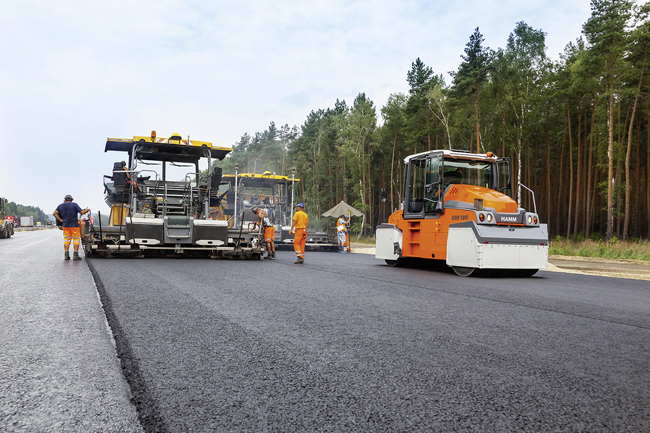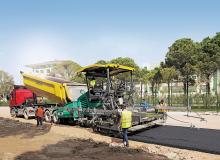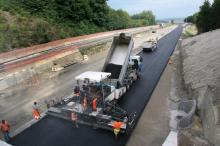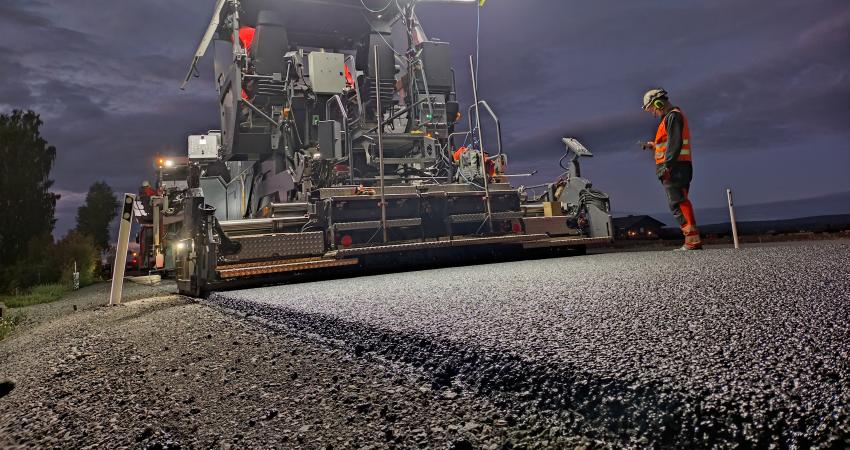
Germany’s capital Berlin is now benefiting from a newly widened ring road, which will help reduce peak time congestion
Much of the work has been carried out by local contractor
Paving processes can be automated with AutoSet Plus, allowing work carried out previously to be replicated using the system. The function is integrated in the paver operator's ErgoPlus 3 console on the paver and suits use on construction projects with multiple sections, as with the project for the Berlin ring road.
Traffic on the heavily-used 9km stretch of the A10 between the Potsdam and Nuthetal junctions looks set to increase further and is expected to grow from 90,000-126,000 vehicles/day by 2025. As a result, the A10 is being expanded from six to eight lanes in this area by 2020. This has required removing the three existing westbound lanes, with four new lanes being built from scratch. The same procedure is then being used for the eastbound carriageway. However, widening the road to a width of 18.5m in each direction presented with challenges for the contractor, Johann Bunte Bauunternehmung. The existing bridges were not sufficiently wide for the new four-lane road width so these are also being replaced. This has meant that the paving team has to move from one strip to the next and between the sections, while also paving a variety of mixes, and sometimes within the same shift.
Being able to store the various paving parameters and settings and then select these using the paver’s control system has been a significant benefit.
According to the contractor, the firm would normally have to set all the paving parameters every time it repositions the paver. The same applies for every new layer if a different mix is to be paved with a different thickness and paving speed. And for a construction project such as the widening of the A10, the settings for pavers would have to be re-entered multiple times, with a potential risk for errors.
The second function was of particular value to the contractor. The firm first paved one strip followed by two more parallel strips. The critical factor in the process was that each mix for the various asphalt layers had to be paved with identical parameters. To achieve this, both paver operators saved the settings after the base, binder and wearing course layers as a paving program whenever these were first laid. After laying the asphalt pavement on one of the sections, the paving team transported the two Vögele pavers to the next and the operators were able to continue working with identical settings using the system. This allowed the firm to ensure that the asphalt layers were laid and pre-compacted in the same way on each section.
One of the pavers was also equipped with the Navitronic Plus from Vögele. This 3D control system provides automatic control of the grade and crossfall, while also controlling the screed’s position and the steering of the tracked pavers. To provide a virtual reference, an mmGPS system from TopCon (3D zone laser and GPS) was used on the Berlin ring road to deliver high precision, while the firm also employed the RoadScan temperature-measurement system to document paving results.









